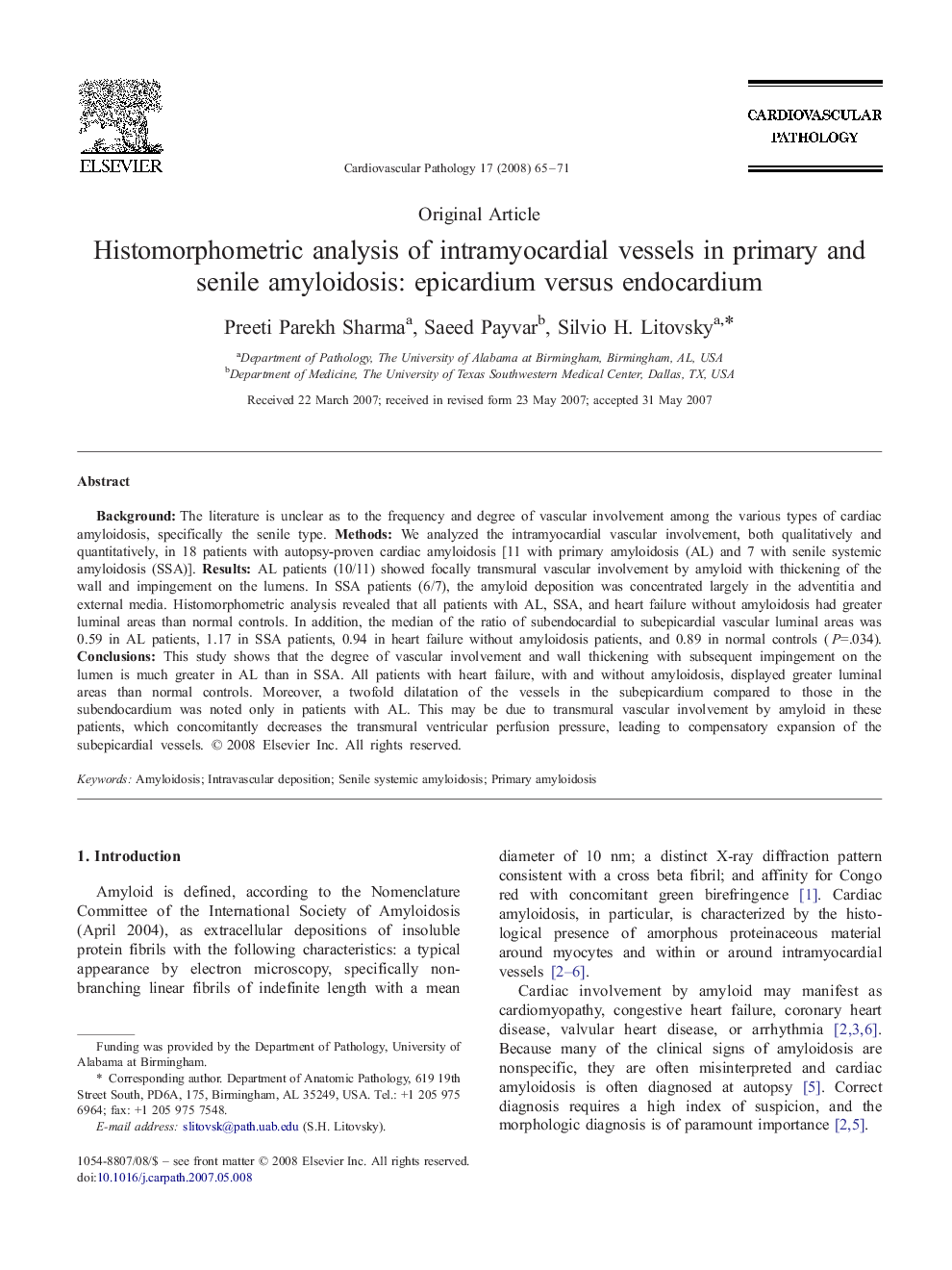| Article ID | Journal | Published Year | Pages | File Type |
|---|---|---|---|---|
| 2899206 | Cardiovascular Pathology | 2008 | 7 Pages |
BackgroundThe literature is unclear as to the frequency and degree of vascular involvement among the various types of cardiac amyloidosis, specifically the senile type.MethodsWe analyzed the intramyocardial vascular involvement, both qualitatively and quantitatively, in 18 patients with autopsy-proven cardiac amyloidosis [11 with primary amyloidosis (AL) and 7 with senile systemic amyloidosis (SSA)].ResultsAL patients (10/11) showed focally transmural vascular involvement by amyloid with thickening of the wall and impingement on the lumens. In SSA patients (6/7), the amyloid deposition was concentrated largely in the adventitia and external media. Histomorphometric analysis revealed that all patients with AL, SSA, and heart failure without amyloidosis had greater luminal areas than normal controls. In addition, the median of the ratio of subendocardial to subepicardial vascular luminal areas was 0.59 in AL patients, 1.17 in SSA patients, 0.94 in heart failure without amyloidosis patients, and 0.89 in normal controls (P=.034).ConclusionsThis study shows that the degree of vascular involvement and wall thickening with subsequent impingement on the lumen is much greater in AL than in SSA. All patients with heart failure, with and without amyloidosis, displayed greater luminal areas than normal controls. Moreover, a twofold dilatation of the vessels in the subepicardium compared to those in the subendocardium was noted only in patients with AL. This may be due to transmural vascular involvement by amyloid in these patients, which concomitantly decreases the transmural ventricular perfusion pressure, leading to compensatory expansion of the subepicardial vessels.
